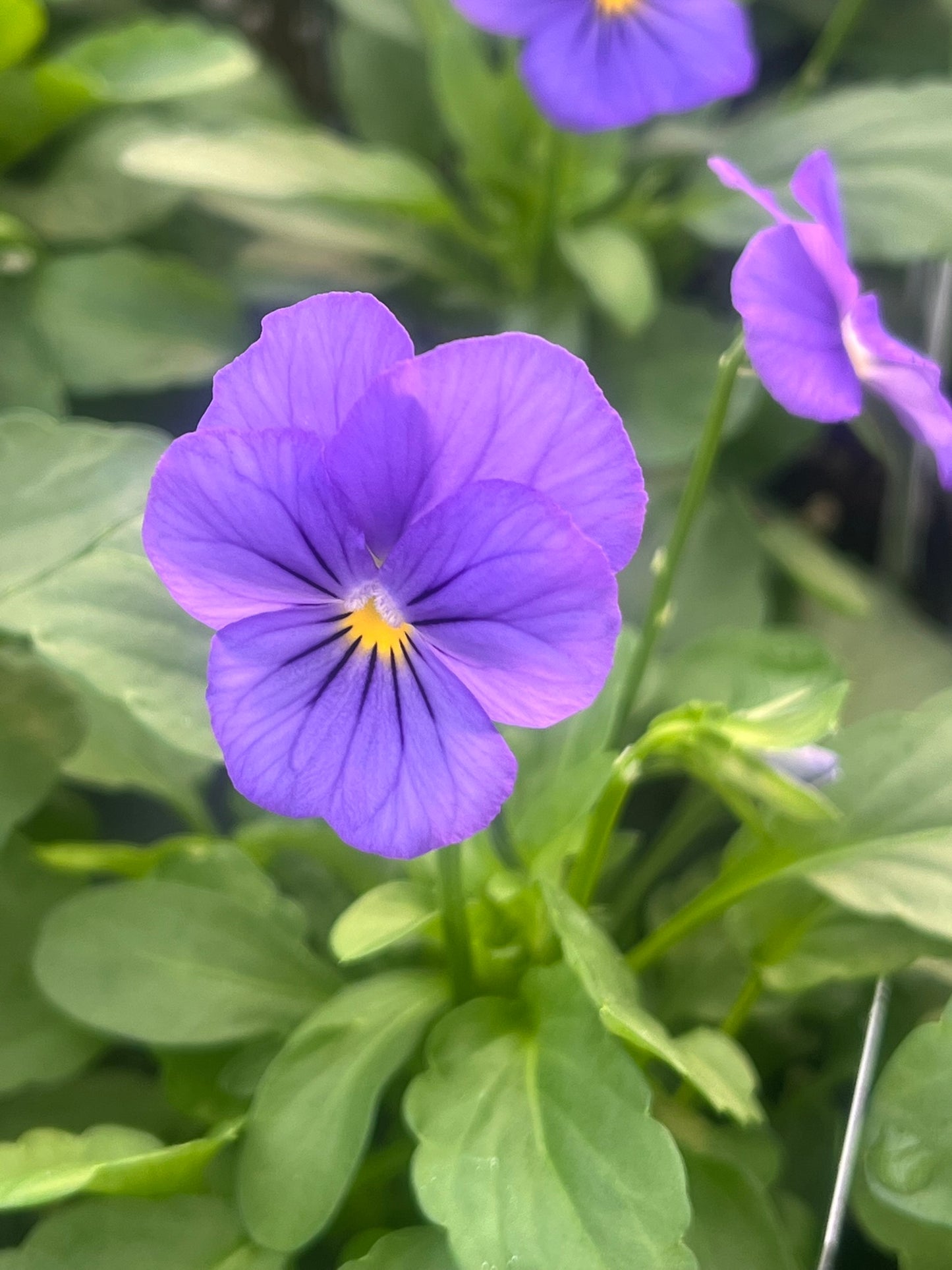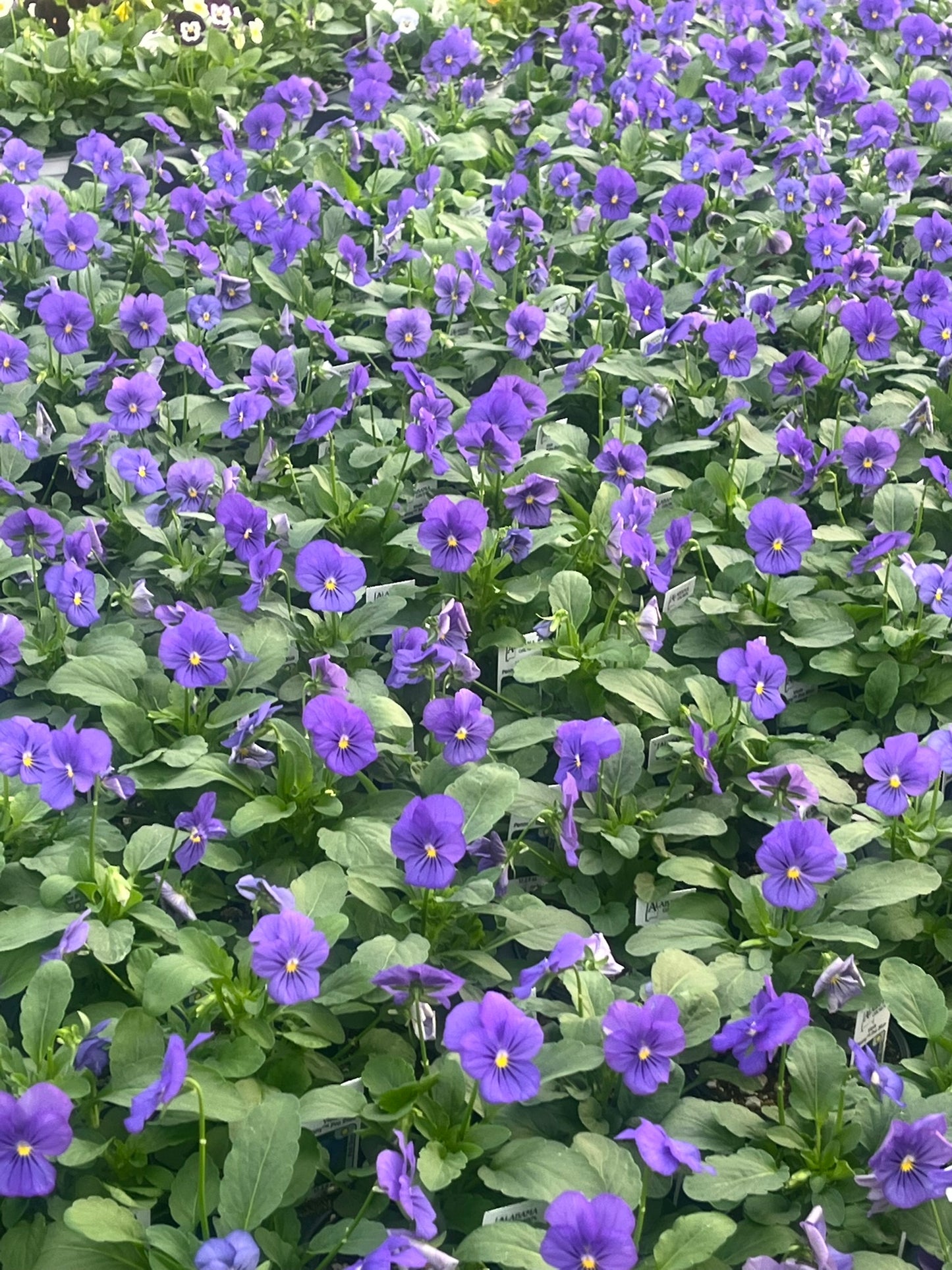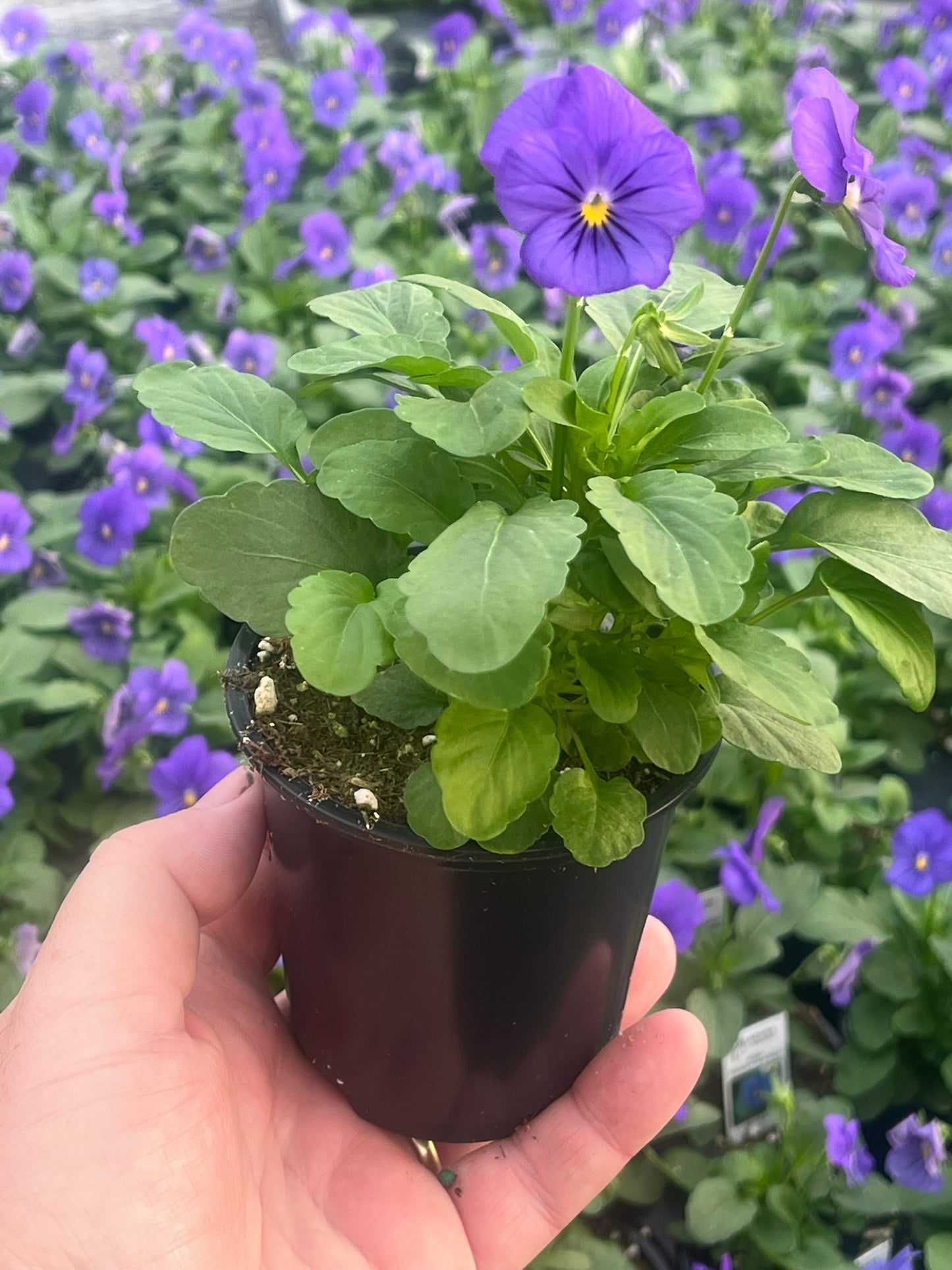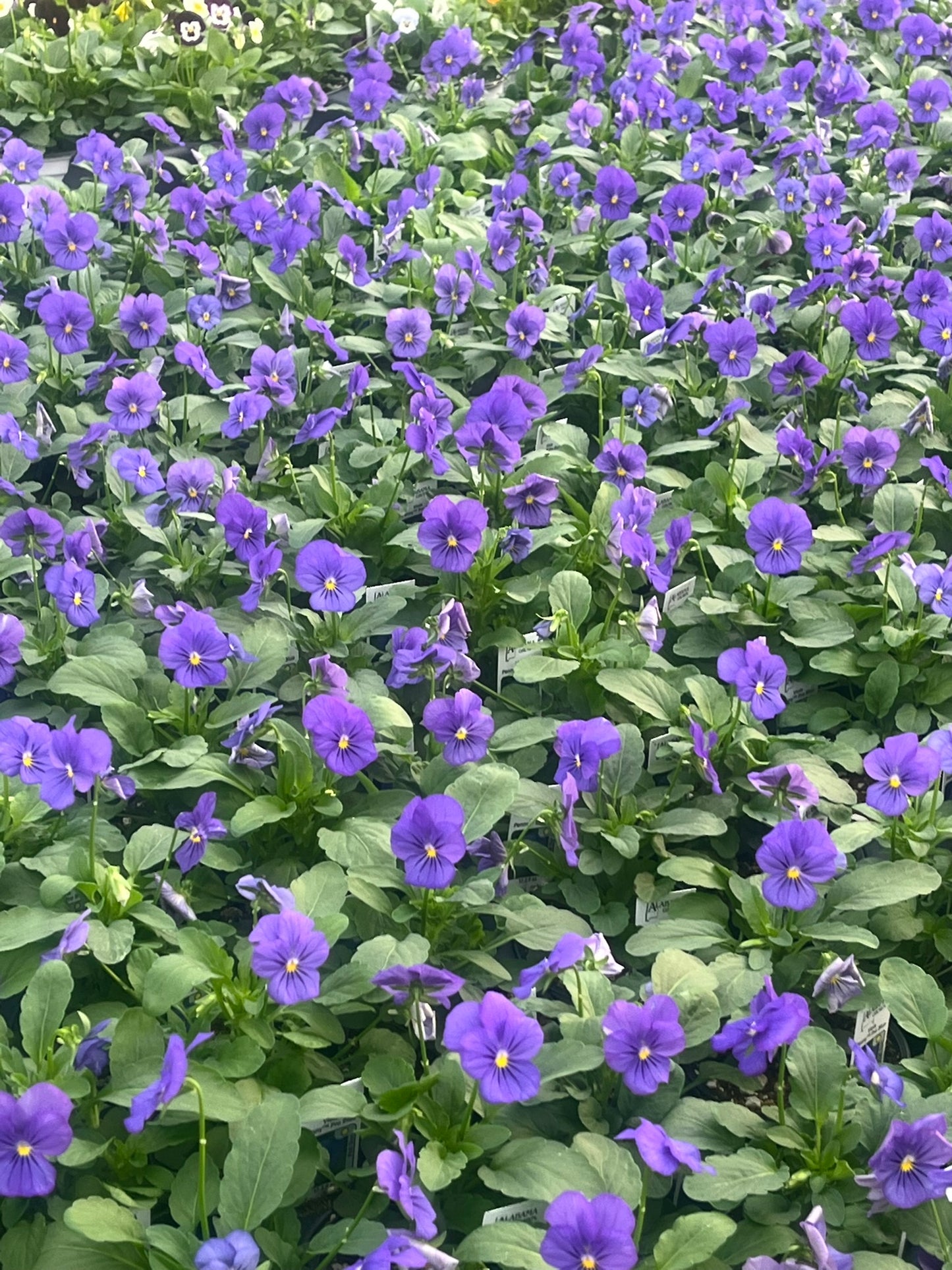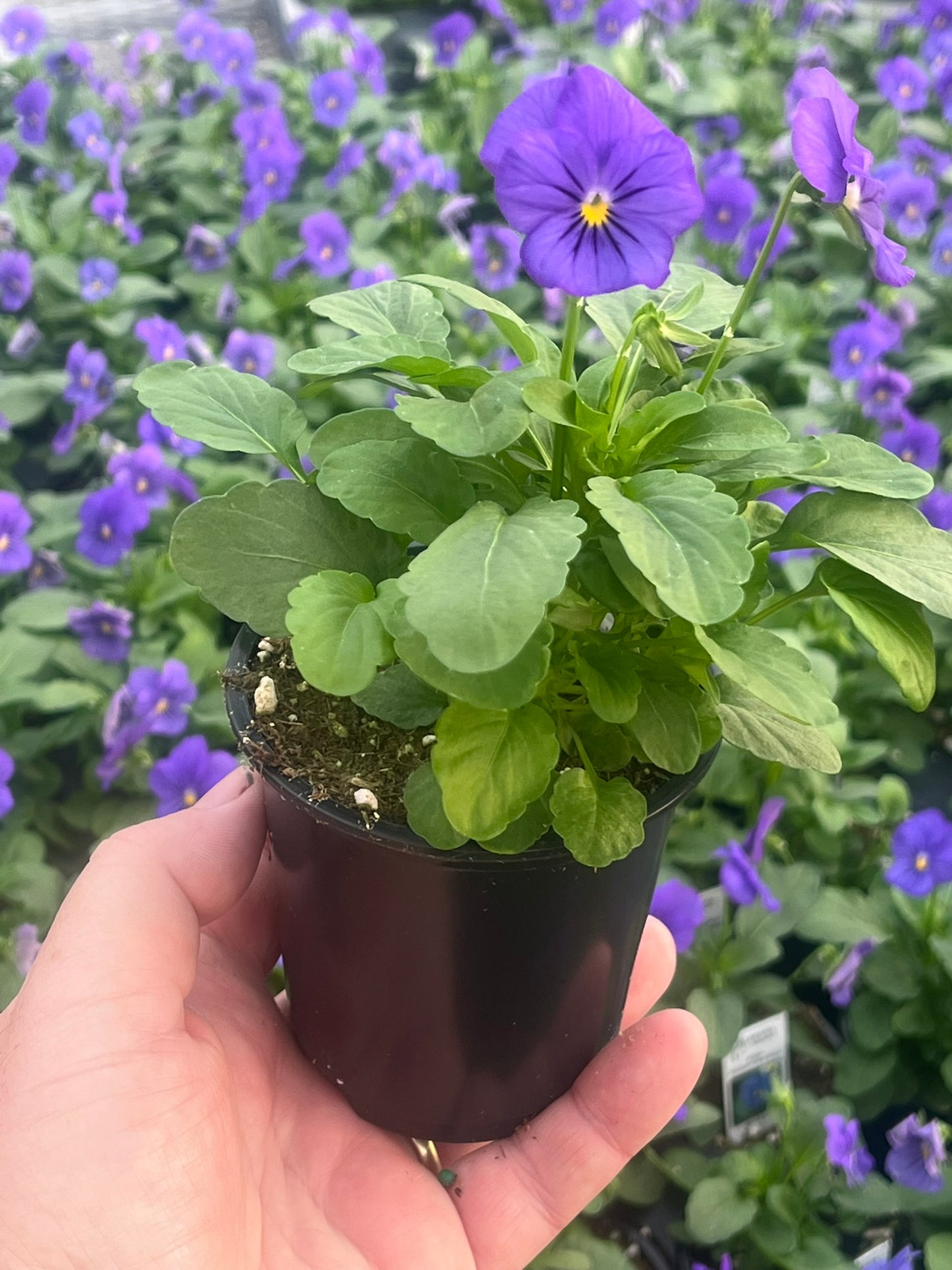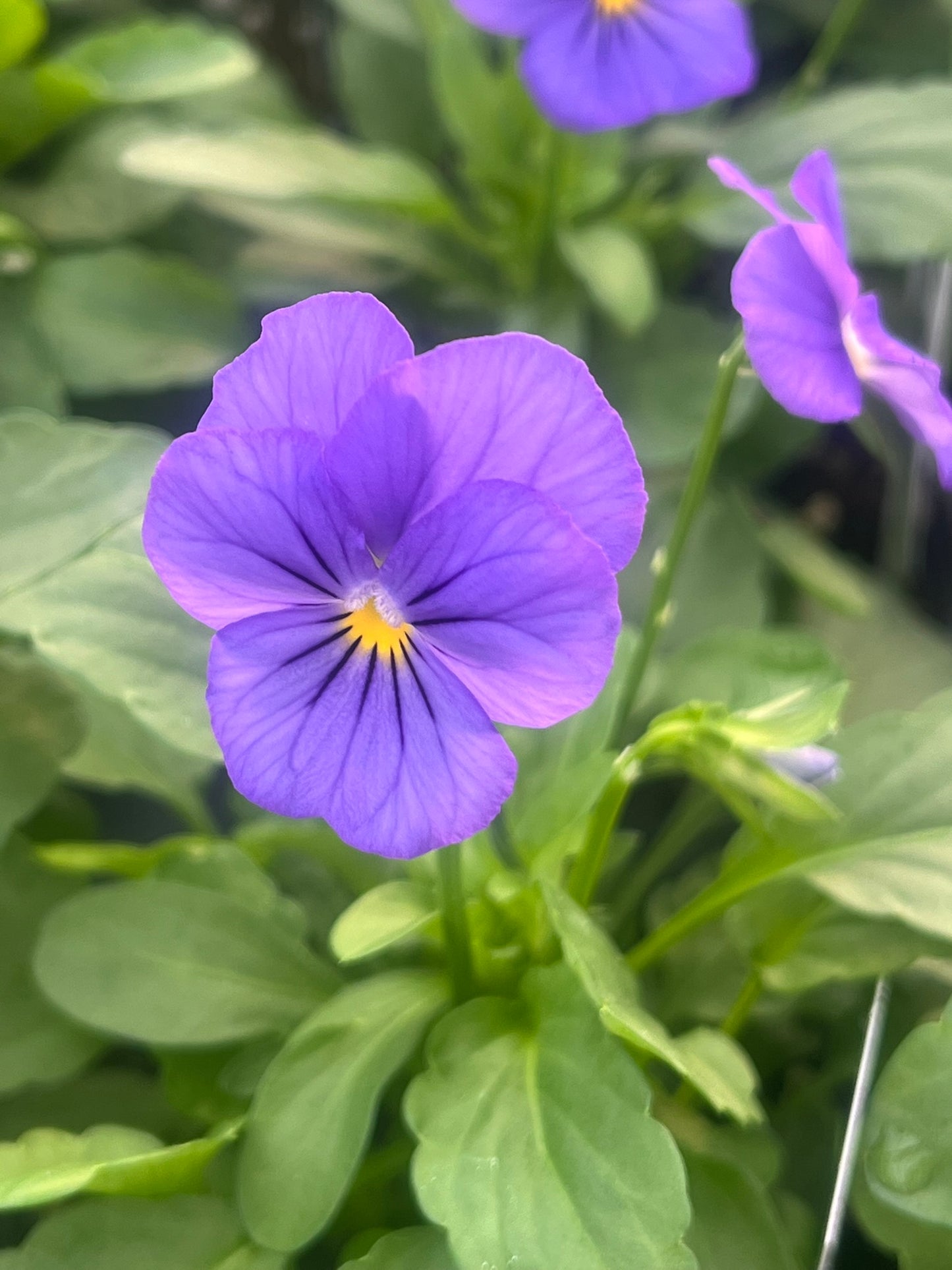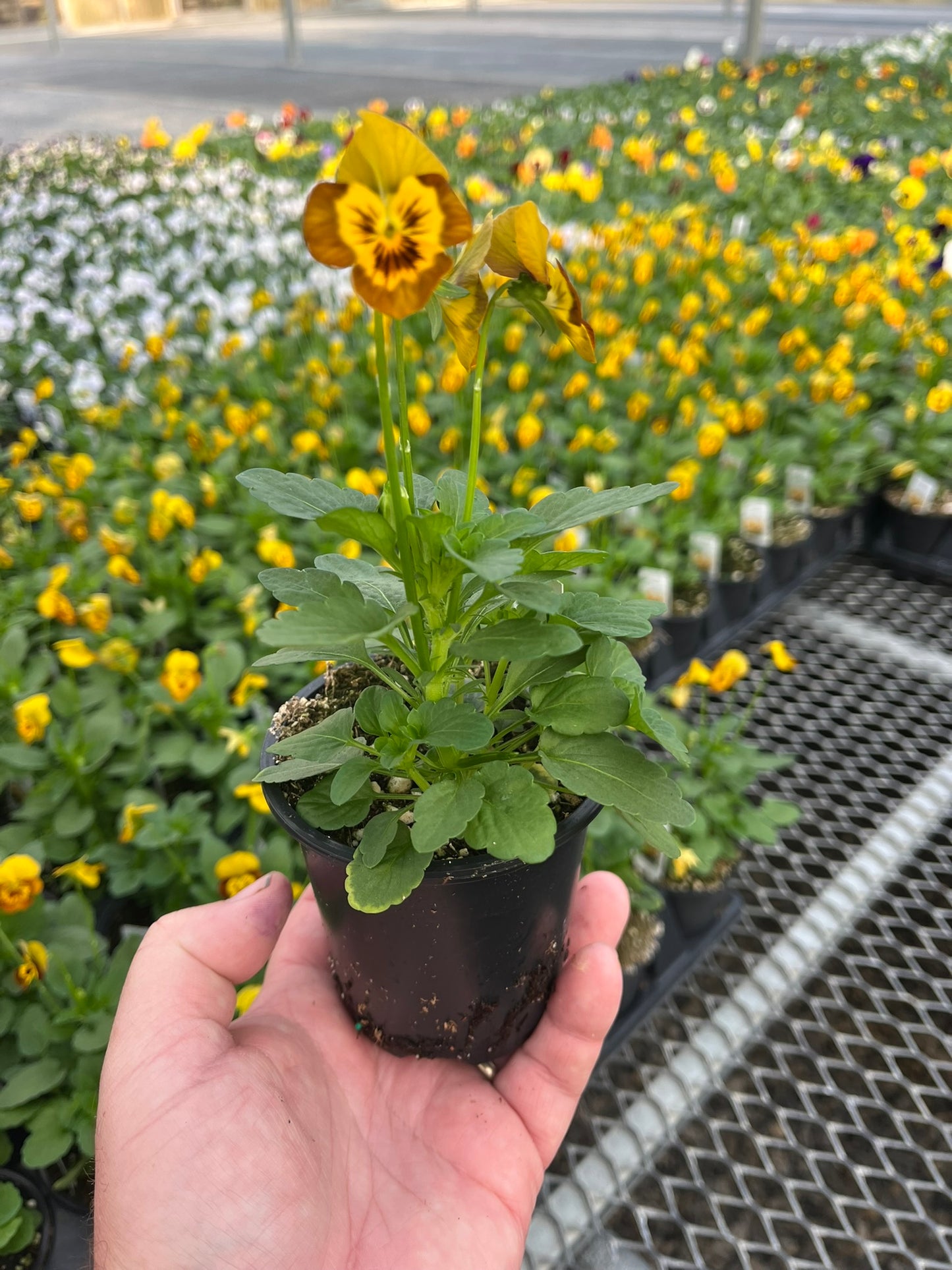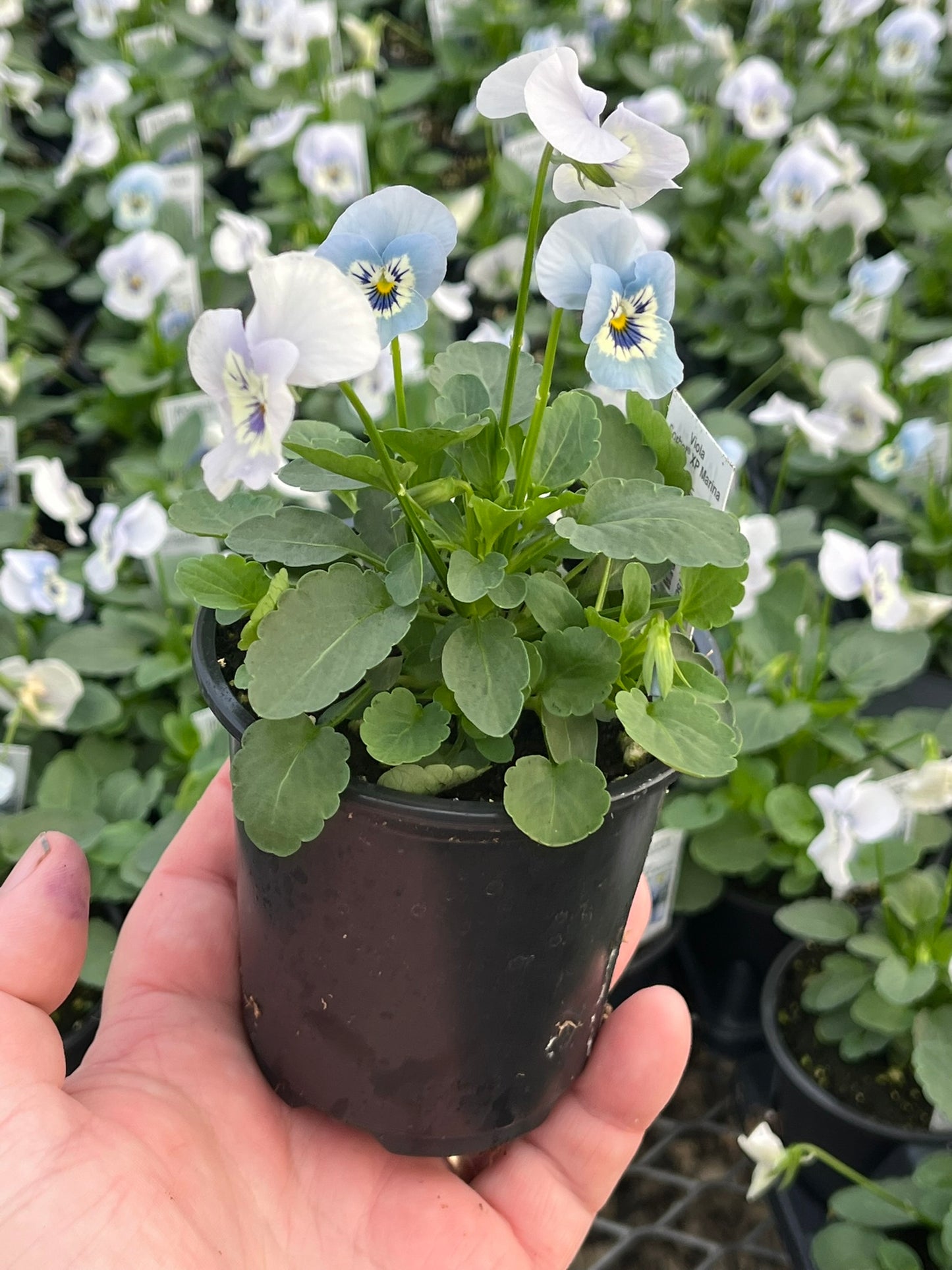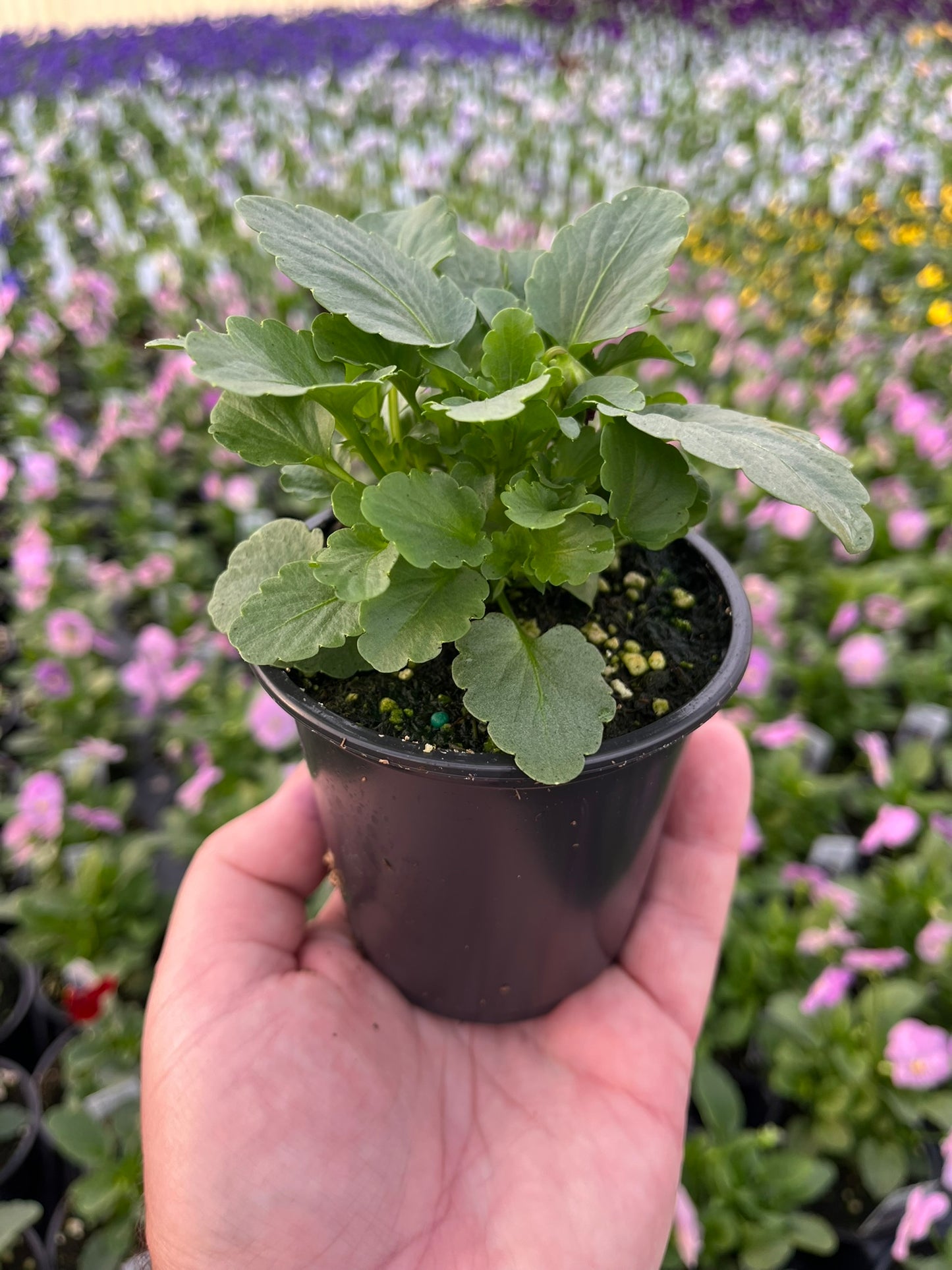Plant Hoarder
Viola, Blue
Viola, Blue
Couldn't load pickup availability
Share
Hardiness Zone:4, 5, 6, 7, 8, and 9
Sun Exposure:Full Sun and Part Shade, Mostly Sun
Viola, Blue — Cool-Season Color That Works Hard for You
Looking for a simple burst of blue that brightens cool days? We’ve got you. Viola, Blue brings soft, steady blooms when most gardens feel quiet. The flowers are small, sweet, and full of charm. But most of all, they show up early, keep going, and make every space feel fresh.
In other words, if you want easy color with a friendly vibe, this is it.
Why We Love Blue Violas
Blue is rare in the plant world. That makes this viola special. Each bloom looks like a tiny watercolor—soft blue petals with a light face and a sunny center. They glow in spring light and shine on crisp fall days. Instead of waiting for heat-loving flowers, you get color now. You get color when you want it most.
We also love how dependable it is. Violas are cool-season pros. They handle light frost, bounce back after cold snaps, and bloom in waves. After more than a few seasons of planting them, we’ve learned this: violas are small, but they’re mighty.
Where They Shine
-
Front borders and edging: Low mounds of bloom draw the eye and hold a clean line.
-
Containers and window boxes: Tight habit, nonstop flowers, and a friendly scale.
-
Hanging baskets: Trailing tips soften edges and add motion.
-
Tuck-ins: Fill gaps between perennials, shrubs, and spring bulbs.
-
Cool-season displays: Fall to winter in mild climates, late winter to late spring everywhere else.
We love pairing blue violas with white alyssum, silver dusty miller, or chartreuse heuchera. The blue pops, the textures play, and the whole bed looks designed.
Quick Specs
-
Type: Cool-season annual or short-lived perennial (treated as annual in warm seasons)
-
Bloom Time: Fall through spring in mild regions; spring to early summer in cooler zones
-
Height/Spread: About 6–8" tall x 8–12" wide
-
Light: Full sun to part shade (afternoon shade in warm zones is best)
-
Soil: Well-drained, rich in organic matter
-
Water: Keep evenly moist; do not let it stay soggy
-
Use: Edging, containers, baskets, bedding, bulb companions
-
Bonus: Cold-tolerant, bee-friendly on mild days
Color That Plays Well With Others
Blue reads calm. It also makes other colors brighter. Plant Viola, Blue near yellow daffodils, soft pink tulips, or white pansies. The blue grounds the mix, so everything else looks sharper. For a modern look, try blue violas with all-white flowers and gray foliage. Simple. Clean. Fresh.
Planting: Simple Steps for a Strong Start
-
Pick the spot. Choose sun to part shade. In hot springs, give light afternoon shade.
-
Prep the soil. Mix in compost. Work the bed until it’s loose and airy.
-
Set the spacing. Plant 8–10" apart for a carpet of bloom.
-
Water well. Soak after planting. Keep the soil evenly moist the first two weeks.
-
Mulch lightly. A thin layer helps hold moisture and reduces splash on the leaves.
If you’re planting in containers, use a high-quality potting mix. Make sure the pot drains well. We like a slow-release fertilizer at planting, then a gentle liquid feed every 2–3 weeks for steady color.
Care: Easy, Friendly, Reliable
-
Water: Keep soil moist but not soggy. Violas dislike “wet feet.”
-
Feeding: Light, regular feeding keeps blooms coming.
-
Deadhead: Pinch off spent flowers. In other words, remove the old to make room for the new.
-
Trim back: If plants get leggy, shear them lightly. They bounce back fast.
-
Heat note: When summer heat arrives, blooms slow. That’s normal. Swap them for warm-season annuals, then bring violas back in fall.
Cold Tolerance and Seasonal Rhythm
Blue violas excel when nights are cool. They tolerate light frost and stay perky after short cold spells. In Zones 7–10, plant in fall for winter-to-spring color. In colder zones, plant as soon as the soil can be worked in spring. You’ll enjoy flowers until real heat sets in.
Design Tips We Use All the Time
-
Layer with bulbs: Tuck bulbs 3–4" below the surface, then plant violas on top. When bulbs bloom, you already have a living frame.
-
Monochrome magic: Fill a shallow bowl with all blue violas for a calm, elegant look.
-
Contrast for pop: Blue + yellow = instant happy. Blue + white = crisp and classic.
-
Pathway edging: A neat, low ribbon of blue guides the eye and softens hard lines.
-
Mix sizes: Pair blue violas with larger pansies for texture and depth.
Good Neighbors and Companion Ideas
-
Spring bulbs: Tulips, daffodils, hyacinths
-
Cool companions: Sweet alyssum, lobelia, pansies, nemesia
-
Foliage friends: Dusty miller, lamb’s ear, heuchera, ornamental kale
-
Herb bonus: Try thyme or sage nearby for a soft, cottage feel
These companions not only look great. They also share similar needs. That means less guesswork and more joy.
FAQs—Fast Answers You Can Use
Do blue violas have fragrance?
Yes, a light, sweet scent on mild days. It’s gentle, not heavy.
Do they attract pollinators?
Bees will visit on warmer days. The blooms are small but inviting.
Sun or shade?
Full sun to part shade. In warm regions, give afternoon shade to keep blooms longer.
Are they edible?
Many gardeners use viola blooms as garnish. But only use flowers you know are grown without chemicals and confirm edibility for your needs.
Seeds or plants?
Both work. Seeds give you volume; starter plants give instant color. We like using plants for quick displays and seeds for mass bedding.
Troubleshooting: Simple Fixes
-
Fewer blooms? Feed lightly and keep deadheading. Check for too much shade.
-
Leggy plants? Trim back by one-third. They regrow fast in cool weather.
-
Yellow leaves? Ease up on water and improve drainage.
-
Heat slump? Switch to summer annuals and bring violas back in fall.
Instead of fighting the season, work with it. Violas thrive when the air feels crisp.
What You’ll Receive
Depending on the listing and season, Viola, Blue is offered as robust starter plants for beds and containers or as premium seed for sowing. Either way, you’re set up for success. We choose strong genetics, clean stock, and fresh color so you can plant with confidence.
How We Suggest You Use Them Today
Start at your front entry. Add a pair of containers with blue violas near the door. Next, edge a sunny path with a soft ribbon of blue. After more than a week, you’ll see buds opening in waves. Keep the water steady. Snip old blooms. Enjoy the calm blue glow every time you walk by.
Bring the Blue Home Today
We’re here to make your cool-season color easy, bright, and joyful. Viola, Blue is simple to plant, simple to care for, and simple to love. It works in pots, beds, baskets, and borders. It pairs with spring bulbs and blends with almost any palette. But most of all, it shows up when you need color the most.
Ready when you are. Let’s plant blue—together.
